




Transition is at the heart of an ambitious masterplan to move Orkney Harbours and the wider community to a decarbonised, cleaner world. This appears easier said than done when you have the Flotta Oil Terminal in your neighbourhood, and daily tanker and cruise traffic passing through. Paul Olvhoj, Business Development Manager, Orkney Harbours offers a clear vision of a greener future for all in this beautiful part of the world. Report by Andy Probert
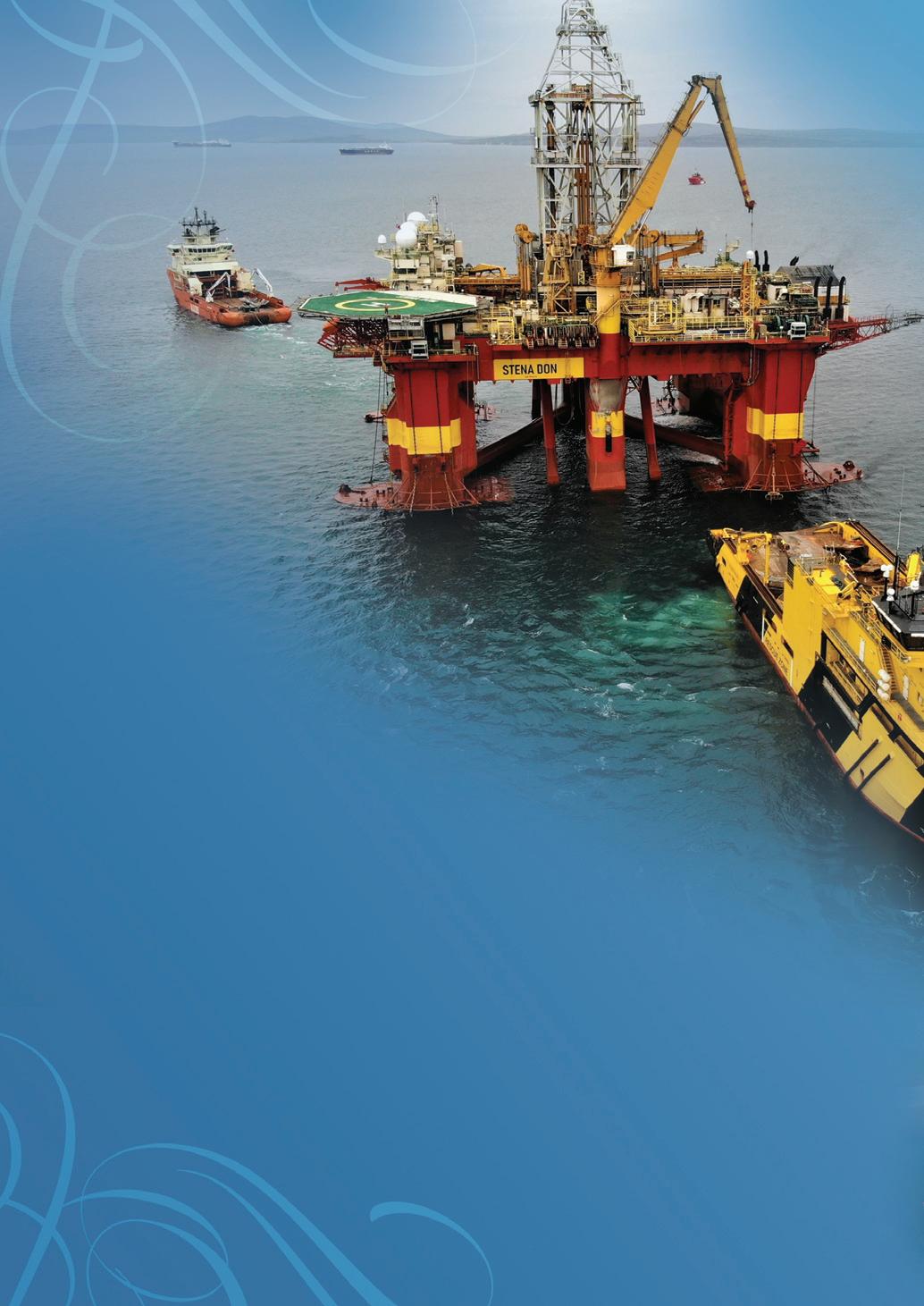
Awealth of natural resources and the sea are never far from the lives of inhabitants of the Orkney Islands. How these features impact the residents and potentially millions of people in the UK for the next 30 years are presently being laid out as part of a masterplan.
With the oil and gas industry in a major state of flux, exciting proposals for wind power, cleaner fuels for shipping, promo tion and protection of the archipelago and the islands’ natural habitats are now front and centre.
Orkney Island Council is the statutory authority that oversees Orkney’s 70 islands, of which only 20 are inhabited. The island chain sits 10 miles off Scotland’s north coast. The council’s Marine Services Division is responsible for the safe opera tion of commercial and leisure ports, a total of 29 piers and harbours, including Scapa Flow, Europe’s largest natural harbour.
The islands lie on the main shipping routes from the Baltic, the North Sea, TransAtlantic commercial shipping routes and the northern Atlantic periphery.
The Flotta Oil Terminal on the island of Flotta in the south of Scapa Flow is the hub of oil and gas operations in Orkney’s waters. Commissioned in 1977, the 395-acre site takes crude oil by pipeline from the North Sea for export around the world.
The deep, sheltered waters of Scapa Flow are positioned between the North Sea and the West of Shetland oil and gas fields. Thi s provides the perfect location for mainte nance and crew changes for these vessels which can lie on moorings or in dynamic positioning mode.
Scapa Flow is the perfect, safe location for ship-to-ship operations of crude oil cargoes, including the world’s first ship-toship LNG transfer. In the last decade, over 28 million barrels of crude oil have been

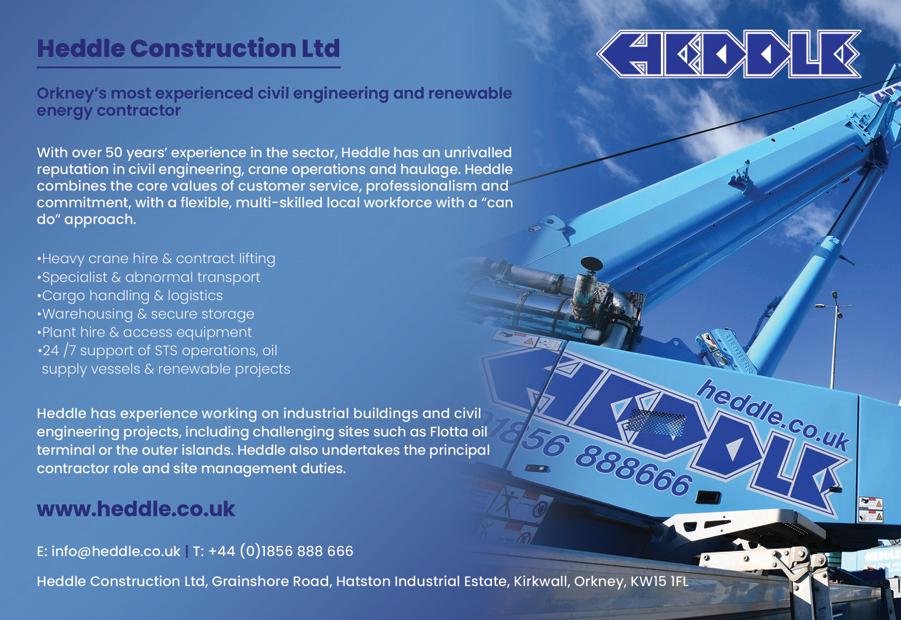

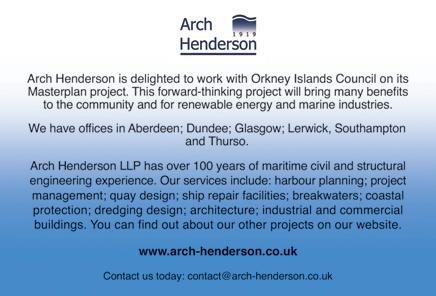
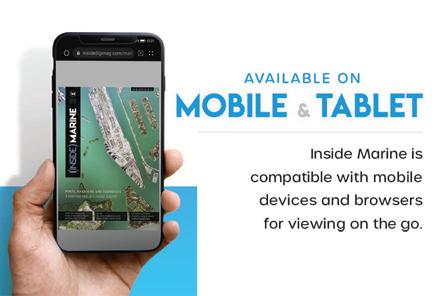

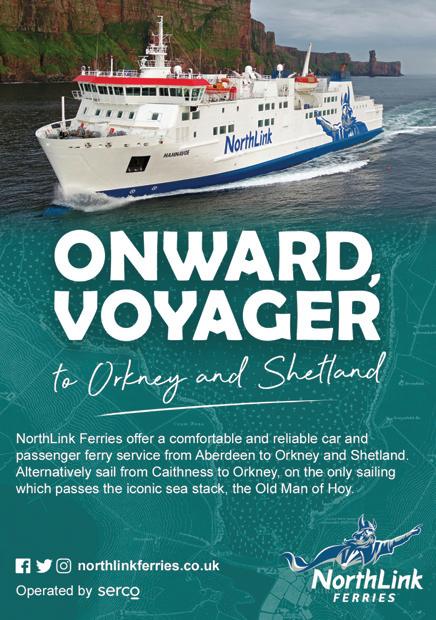
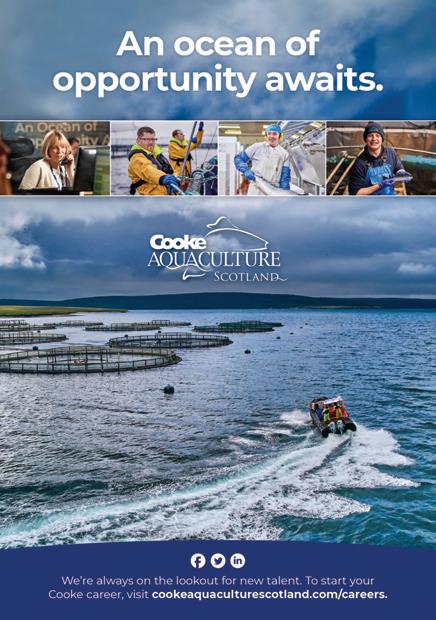
transferred via 170 ship-to-ship operations. In 2016, Scapa Flow’s first ship-to-ship transfer of LPG was completed.
“Oil has been king in the Orkneys for a long time, and vessels coming in and out of Flotta annually could be measured in their hundreds,” said Paul Olvhoj, Business Development Manager, Marine Services.
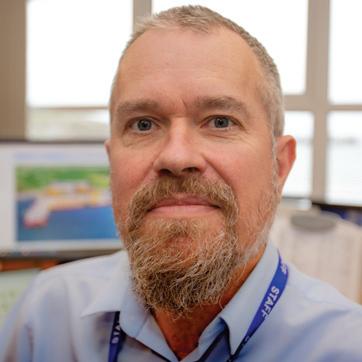
“However, as the crude oil and ships diminish there has been an acknowledged need to replace that business or diversify away from oil and gas income streams.”
This has been fuelled by enormous growth in the cruise industry, offering unique day trips (transit calls) to see the Heart of Neolithic Orkney UNESCO World Heritage site and experience the natural delights of the Orkneys.
“We offer transit calls from the UK, and out of the Baltic and Arctic. We are the most successful transit call in the UK, with 170 vessels annually, with 2022 up to 140 so far.” While oil and gas accounts for about 70% of income to the Orkneys, the cruise sector generates a healthy 20%.
The Marine Services Division has also grown, taking an extra two tugs with a third on the way, and operating with five Class A pilots. To add to the operational complexity, it operates 10 ageing ferries to provide life line services to the inner and outer isles.
With one eye firmly on the future – refer encing shipping’s decarbonisation and the transition from oil and gas to alterna tive energy sources - the Orkney Harbour Authority has created a masterplan

Mr Olvhoj commented: “The biggest driver of the masterplan, which has a vision up to 2050, is to look to future developments and projects to support marine renewables, par ticularly offshore wind, and help build a more sustainable greener future.
“We know what we have to do and the net zero targets to achieve. These targets place us in a unique position because our
ORKNEY HARBOURS I PROFILEindustry needs innovative technological advances, such as powering deep sea ocean-going vessels with cleaner fuels.”

One of the first tasks will be to focus on taking full advantage of the unique geographical and natural characteristics of Scapa Flow and building a new deepwater quay.
“Scapa Flow is an incredible natural asset,” explained Mr Olvhoj, “but it doesn’t have a deep-water quay. There are few har bours in Scotland offering deep-water quayside facilities like those possible here. The proposed quay will be critical to supporting the offshore wind projects that will take place to the west and the east over the next decade.”
Supporting offshore wind developers’ activities, such as assembly, installation, marshalling, operations and maintenance will be highly beneficial in achieving the emerging renewables sector.
This was given added impetus by ScotWind, a programme delivered by Crown Estate Scotland to lease areas of the seabed around Scotland for wind farm projects. It recently awarded 17 pro jects covering an area of 7,000km² with a combined potential to generate around 25GW of renewable energy.
“Putting in place infrastructure, such as the Scapa Deep Water Quay,” continued Mr Olvhoj, “will enable the Orkneys to be at the centre of Scotland’s green energy transformation.”
The future £170m deep-water quay is also viewed as a potential player in exciting new projects, such as the Flotta Hydrogen Hub, a large–scale green hydrogen facility for storage and distribution of transitional and green fuels. The proposed quay will also have the capacity to accommodate semi-sub mersible platforms of all types, giving
Orkney a unique competitive edge within the existing oil and gas market.
The masterplan foresees extensive cap ital projects; overhauling and extending Hatston Pier, Kirkwall Pier, Scapa Pier and Stromness, with the focus on all sectors that are currently supported in Orkney. A second phase will develop the islands’ smaller harbours and piers.
A commissioned study found the pro posals will have a transformational impact on the Orkney’s economy and society, cre ating more than 100 new jobs, in addition to substantial job opportunities during the construction phases.
While the masterplan fully embraces decarbonisation, it seeks to support and generate social and economic benefits from ongoing oil and gas activity. Mr Olvhoj concluded: “The over-arching goal is that we want to lead the way towards carbonfree shipping and ports.
“The masterplan not only positions us to grasp those big opportunities but lays the foundations for a long-term transition away from fossil fuels with the full support of stakeholders, agencies, and, importantly, the people of Orkney.” n
